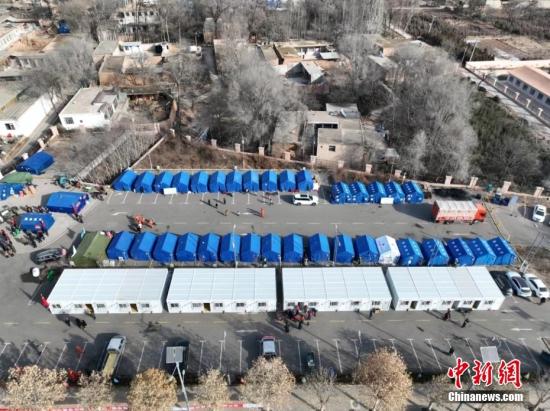China launches world's largest earthquake early warning system
China's national earthquake early warning project, also the largest in the world, has officially entered full operation after five years of construction, making people in populous and quake-prone areas able to receive the first warnings in just seven seconds on average after an earthquake occurs, officials said on Friday.
The system, known as the National Earthquake Intensity Rapid Reporting and Early Warning Project, allows people to receive alerts within a critical time window of seconds to tens of seconds before destructive seismic waves arrive, Li Yonglin, director of the China Earthquake Networks Center, said at a news conference in Beijing.
The project was initiated in 2018, with pilot areas in provinces of Yunnan, Sichuan and Fujian, as well as the Beijing-Tianjin-Hebei region, and began offering trial services to the public in 2021. It passed its final acceptance of construction on Thursday.
The earthquake warning network already covers the entire country, ensuring that the average time for people in key alert areas to receive their first warning is just seven seconds after an earthquake occurs, while in general alert areas, this time ranges from 10 to 30 seconds, said Li.
"Upon detecting an earthquake, the early warning system uses the information from the initial, less destructive primary waves to quickly estimate the earthquake's basic parameters and predict its impact on surrounding areas," he said. "This information is then sent to potentially affected regions before the more destructive secondary waves arrive."
Key alert areas include 19 provincial or local areas in North China, the Southeast coastal regions, the country's north-south seismic zone, Xinjiang Uygur autonomous region, and Xizang autonomous region.
During this brief window period, the public can take emergency measures, and critical infrastructure can implement emergency responses, such as stopping high-speed trains, shutting off gas pipelines, shutting down nuclear reactors, and stopping elevators at the nearest floor, said the official.
Prior to this network, the public mostly relied on the CENC's rapid earthquake reports, which usually took two to three minutes to be released after an earthquake occurred, once the seismic waves were fully propagated, said Ma Qiang, the project's chief engineer.
These improvements in early warning capabilities are supported by a network of 15,899 monitoring stations across the country, making this project the largest earthquake monitoring system in the world, according to the China Earthquake Administration.

